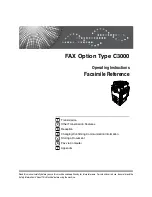
Ricoma Quick Start Guide
70
Cap selection
• Choose a cap that fits your frame. The shape of the visor board inside your cap should match
as closely as possible to the curvature of your cap frame. If there are large gaps at the center
or sides, registration problems are likely to occur in these locations.
• If the cap doesn’t fit your frame, order samples of caps in the styles that you want to try out.
Search until you find one that does fit more closely.
• Choose the best cap that your customer’s budget will allow. Cheap caps result in high wastage
rates, which translate to expensive machine time for which you will not be paid. Also, factor in
the extra time that operators spend trying to reach good sewing quality on the cap.
• Reduce or eliminate details and outlining where possible.
• Increase column width. The X-axis columns tend to sew narrower on caps than on
flat goods.
• Lengthen fill stitch length to reduce needle penetrations and stress on cap. Longer
fill stitch length on caps reduces run time.
• Enlarge lettering to at least 3/8” high if possible.
• Digitize in independent sections. Results in more color changes, but improves
registration on many designs.
Cap digitizing
• For best results, apply the appropriate backing. Many embroiderers like to use a 3-ounce
tear-away backing and adhesive spray on unstructured caps for better clarity on lettering and
detail. On structured caps, use a light to medium-weight tear-away backing depending on the
complexity of the design. More complex designs will need heavier backing.
• Topping is beneficial on textured caps like heavy twill and corduroy. It also helps to increase
the clarity of designs with small details and lettering.
• You may need to tighten the tension on the bobbin case. Sewing in the round makes bobbin
want to pull up to the top side of the work. It helps to use a spun polyester bobbin on caps
Cap sewing tips



































